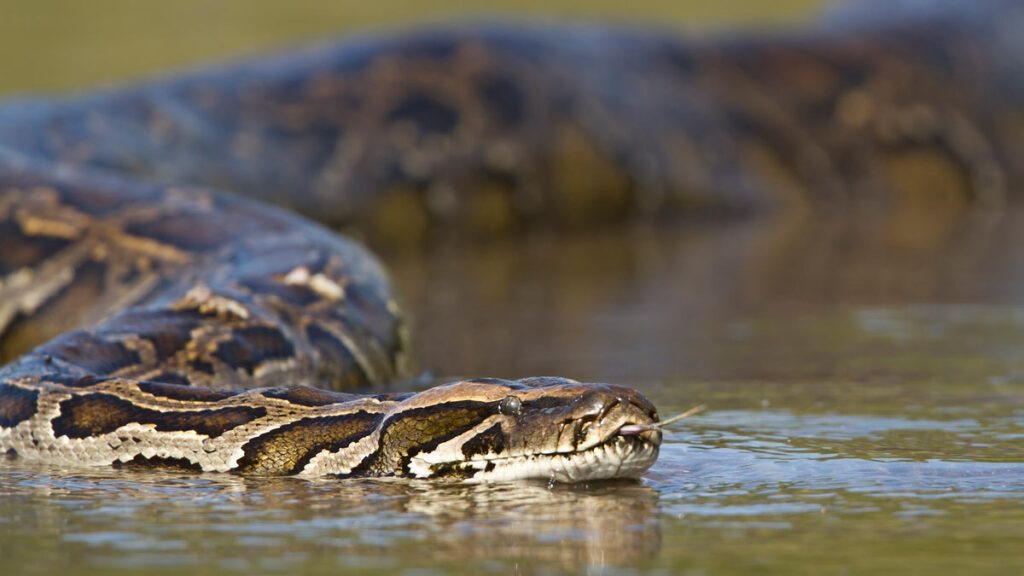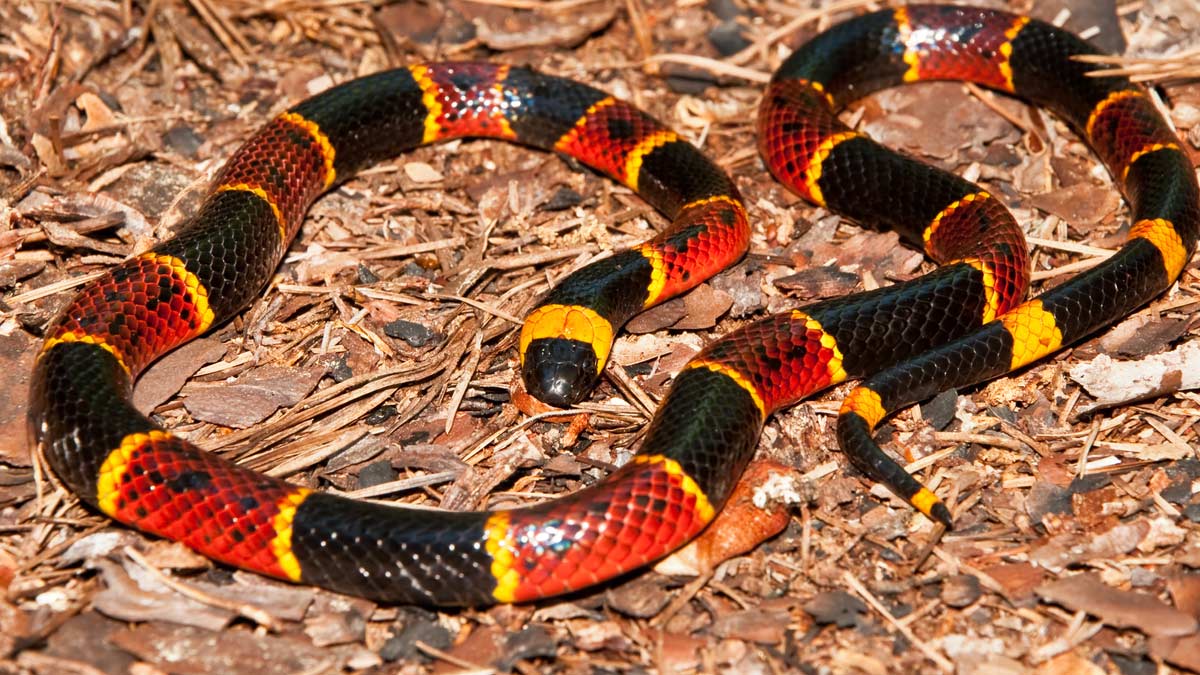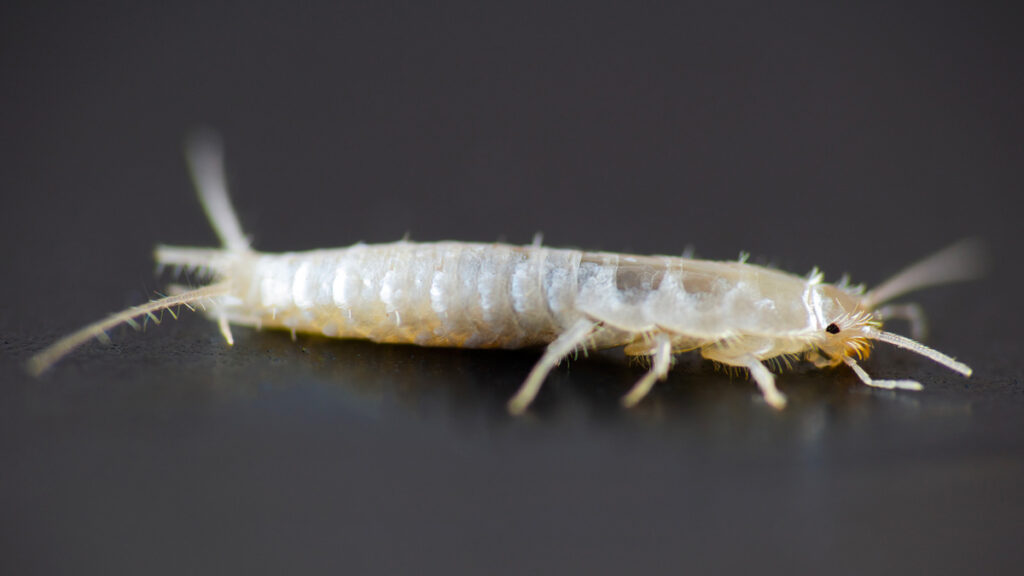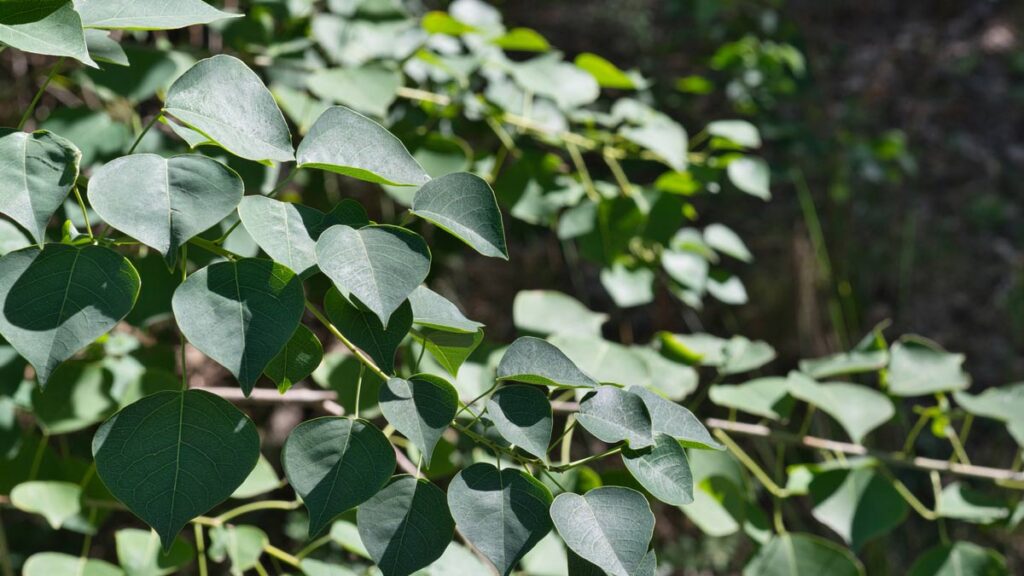
Coral Snakes in Florida
Distinguishing, Danger, and Safe Removal
Updated on: January 2024

Coral snakes, with their vivid bands of red, yellow, and black, are among Florida’s most visually striking yet potentially dangerous reptiles. While they possess vibrant colors that may be attractive, they also serve as a warning to potential predators and as a point of confusion for Floridians. It’s not uncommon to mistake non-venomous species like the scarlet kingsnake or the scarlet snake for the venomous coral snake, especially given the similarities in their patterns. This confusion underscores the need for residents and visitors alike to approach these serpents with caution and knowledge. The age-old rhyme “red touch yellow, kill a fellow; red touch black, venom lack” can serve as a guide but understanding their habits and habitats is just as necessary for ensuring safety.
Find What You Need
Distinguishing Features and Identification
It is very important for Floridians to be able to differentiate between the venomous coral snake and the harmless mimics in their environments. The vibrant color bands can be confusing and makes it easy to mistake a non-dangerous snake for a lethal one. The scarlet kingsnake and the scarlet snake are two such mimics that often cause confusion due to their similar banded pattern. Identification of their color bands is key. The saying, “red touch yellow, kill a fellow; red touch black, venom lack,” has practical application. While this rhyme holds true in many cases, do not solely rely on it, especially when considering the variations that exist in nature.
In identifying the physical characteristics of the venomous coral snake, look for their smooth scales and rounded head, which seamlessly transitions to their body. Their eyes are also relatively small with round pupils. One of the most recommended products to aid in identification is the “Reptile Field Guide by Everglade Explorers”, which provides clear images and descriptions of Florida’s snakes. For those wanting a more digital approach, the “Snakes of Florida” mobile app, priced at $2.99, provides a visual guide for quick differentiation in the field. But, as always, the safest approach when encountering any snake is to keep a safe distance and avoid handling it, regardless of its perceived identity.
Ecology and Habitat
Coral snakes are elusive in nature and tend to prefer specific habitats in the Florida. Scrublands, pinelands, and hardwood forests provide ideal conditions for these reptiles, with the dense foliage offering camouflage and protection. These environments are rich in leaf litter, which the snakes use to burrow and hide. Moreover, Florida’s suburban gardens, with their plentiful mulch and shrubbery, can unintentionally create suitable hideouts for these snakes.
Population data, gathered from the Florida Fish and Wildlife Conservation Commission, estimate that the state houses several thousand coral snakes. However, exact numbers can be difficult to determine due to the snake’s reclusive behavior and the vastness of Florida’s diverse habitats. One noteworthy product that has been of assistance in tracking these creatures is the “ReptileCam Motion Detector”, priced at $149.95. This motion-activated camera helps researchers and enthusiasts capture images of snakes in their natural habitat, aiding in population estimation and behavioral studies.
As for their seasonal activity, coral snakes are most active during the Florida wet season, which spans from June to September. The increased humidity and temperatures are conducive to their feeding and mating habits. But it’s important to remember that while they’re more active in these months, a chance encounter is possible year-round. As components of Florida’s intricate food web, coral snakes play a vital role in regulating pest populations, primarily preying on smaller snakes, lizards, and frogs. Their presence indicates a healthy ecosystem and balances predator and prey.
Take Away
In Florida, the vividly colored coral snake entails respect and caution. While their venom is potent, education and preventative measures can mitigate encounters. Isolated findings of non-native coral snake species, possibly from the pet trade, highlight the need for ongoing vigilance and responsible wildlife management. The key lies in understanding, coexistence, and prioritizing the safety of both humans and wildlife.
The Danger They Pose
While encounters may be rare, understanding the potential dangers and the appropriate steps to take if bitten is extremely important in ensuring your safety.
Potency of Venom
In comparison to other venomous snakes in Florida, the bite of a coral snake, while less frequent, can be more severe due to its venom’s potency. The venom is a potent neurotoxin, disrupting the nervous system’s normal functions. Initially, a bite may seem benign, with minimal swelling and pain. However, as the venom spreads, symptoms can escalate, leading to blurred vision, difficulty speaking, and muscle paralysis. This rapid progression, if not addressed, can be fatal, emphasizing the venom’s powerful and swift-acting nature.
Bite Incidence and Fatality
Despite their potent venom, coral snake bites are still relatively rare. There have been fewer reported incidents due to their reclusive nature and short fangs, which necessitate a chewing motion to deliver venom. According to Florida Health Department records, in the past decade, there have been fewer than 100 confirmed coral snake bites, with a small fraction of these resulting in fatalities. However, each fatality underscores the importance of prompt medical attention following any potential bite.
First Aid and Medical Response
If bitten, the victim should immobilize the affected limb and keep it at or slightly below heart level. While it’s crucial to avoid panic, speed is of the essence. The “MedSavvy First Aid Kit,” retailing for $45.99, contains compression bandages suitable for snakebites. Victims should avoid using a tourniquet or cutting the wound. Most hospitals in Florida stock the North American Coral Snake Antivenom (NACSA), which is the primary treatment for coral snake envenomation. However, due to the infrequency of bites and the cost of antivenom, which can range from $1,500 to $2,500 per vial, not every hospital may have it on hand. It’s recommended to call ahead to ensure its availability or be directed to a facility that carries it.
Coral Snake Management and Removal
Understanding the proper removal steps and techniques should be of the utmost importance for all residents in ensuring one’s safety when encountering a coral snake.
Prevention and Deterrence
Homeowners should consider modifying their properties to be less inviting to coral snakes to decrease the risk of their presence on their property. Eliminating piles of debris, wood stacks, and dense underbrush can reduce hiding spots. Sealing gaps or holes in homes and sheds is also important to prevent these creatures from seeking shelter indoors. Products such as the “Snake-Away Repellent Granules,” available at most garden centers for around $12.99, are designed to deter a variety of snakes, including coral snakes, from treated areas.
Safe Handling and Removal Techniques
The primary rule when encountering a coral snake—or any snake—is to maintain a safe distance. If removal becomes necessary, using a long snake hook, like the “ReptiPro Deluxe Snake Handling Hook” retailing for $29.99, can assist in safely maneuvering the snake. It’s also advised to use snake tongs or grippers to ensure a secure and gentle grip. While it is technically legal for Florida residents to remove and relocate coral snakes from their property, it’s a highly risky task. Given the potential dangers, amateur removal is strongly discouraged.
Professional Resources
If confronted with a coral snake on one’s property, it’s always safest to contact a professional. “Florida Snake Solutions” and “Wildlife Removal Services of Florida” are two reputable organizations specializing in the safe removal of venomous snakes, with prices starting from $150 depending on the location and complexity of the removal. These experts are trained to handle and relocate the snake without harm to the animal or themselves, ensuring a safe outcome for all parties involved.
Educating the Public
As coral snakes are primarily located in Florida, it is important that its residents be educated not only about their appearance and potential dangers but also about their importance in the ecosystem and proper handling methods to ensure a proper coexistence.
Educating Children and Residents
Education is an important tool in minimizing unfortunate encounters with venomous species. For children, interactive programs such as the “SnakeSafe Junior” workshop, priced at $20 per child, offer hands-on learning about native snakes, including coral snakes. Parents and educators should also consider purchasing visually appealing posters and booklets, like the “Florida Snake Guide,” which costs $9.99, to increase knowledge on identifying venomous snakes and their typical habitats. It’s important to teach residents, especially children, never to handle or approach a snake, regardless of its size or perceived harmlessness. Clear markings on the ground or signs indicating potential snake habitats can serve as proactive reminders for both residents and visitors. Regular yard maintenance, removing potential hiding spots, and wearing protective footwear in dense areas can further decrease the risk of an unexpected encounter.
Importance of Preservation
The coral snake, like all creatures, plays a vital role in the ecological balance of Florida’s environment. Eradicating them not only disrupts this balance but can lead to an overpopulation of their prey, potentially creating new challenges. Additionally, the ongoing urbanization and habitat modifications in Florida have confined and endangered these reptiles, altering their natural behaviors. It’s important to understand that every creature, no matter how venomous or intimidating, contributes to the ecosystem’s overall health.
Protection Status
As of now, the eastern coral snake, found primarily in Florida, is not listed as a protected species under the federal Endangered Species Act. However, the state does have regulations in place that prohibit the indiscriminate killing of snakes without valid reasons. Conservationists continuously monitor snake populations, ensuring that they remain stable and do not inch closer to endangerment.


